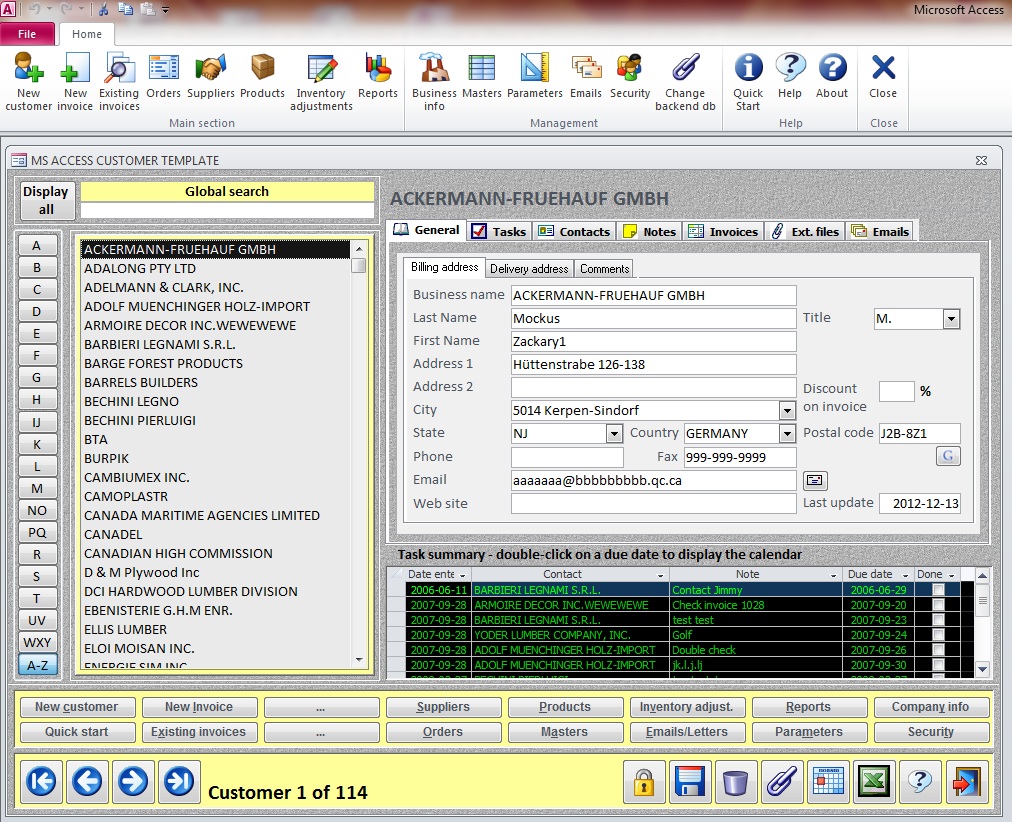

- #Microsoft access database how to#
- #Microsoft access database install#
- #Microsoft access database 64 Bit#
- #Microsoft access database 32 bit#
#Microsoft access database 64 Bit#
IF THE 64 BIT VERSION OF MICROSOFT OFFICE IS INSTALLED: Relaunch Importer and attach an Excel file to import.Verify that the file installed by checking the computer's Add or Remove Programs.

#Microsoft access database install#
#Microsoft access database 32 bit#
IF THE 32 BIT VERSION OF MICROSOFT OFFICE IS INSTALLED:
#Microsoft access database how to#
If unsure as to the version of Microsoft Office that is installed, please refer to this Microsoft Article about how to determine this information.Determine which version of Microsoft Office is installed: 32 bit or 64 bit.NOTE: No matter which version of Microsoft Office that is installed (32 bit or 64 bit), download the AccessDatabaseEngine.exe file and NOT the one that ends in X64.Download the Microsoft Database Engine.exe file from Microsoft's web site HERE.

Please follow the steps below to download and install the necessary file. If you have worked with other database systems on desktop computers, you might have seen the term database used to refer to only those files in which you store data.īut, in Access, a desktop database (.accdb) also includes all the major objects related to the stored data, including objects you define to automate the use of your data.The Microsoft Access Database 2010 must be installed in order to allow Transaction Pro Importer to read Excel and Access files. Within an Access desktop database, the main objects are tables, queries, forms, reports, macros, data macros, and modules. Report (optional) − Information from the database is organized in a nice presentation that can be printed in an Access Report.Īccess calls anything that can have a name an object. Query − This is a fancy term to basically describe the process of retrieving information from the database. To use MS Access, you will need to follow these four steps −ĭatabase Creation − Create your Microsoft Access database and specify what kind of data you will be storing.ĭata Input − After your database is created, the data of every business day can be entered into the Access database. Microsoft Access stores information which is called a database. Software developers can use Microsoft Access to develop application software. You can export data to and import data from word processing files, spreadsheets, or database files directly.Īccess can work with most popular databases that support the Open Database Connectivity (ODBC) standard, including SQL Server, Oracle, and DB2. It can also import or link directly to data stored in other applications and databases.Īs its name implies, Access can work directly with data from other sources, including many popular PC database programs, with many SQL (Structured Query Language) databases on the desktop, on servers, on minicomputers, or on mainframes, and with data stored on Internet or intranet web servers.Īccess can also understand and use a wide variety of other data formats, including many other database file structures. However, Access 2013 also complements other database products because it has several powerful connectivity features. Like relational databases, Microsoft Access also allows you to link related information easily. It stores data in its own format based on the Access Jet Database Engine. Microsoft Access is just one part of Microsoft’s overall data management product strategy. It is a member of the Microsoft Office suite of applications, included in the professional and higher editions. Microsoft Access is a Database Management System (DBMS) from Microsoft that combines the relational Microsoft Jet Database Engine with a graphical user interface and softwaredevelopment tools.


 0 kommentar(er)
0 kommentar(er)
